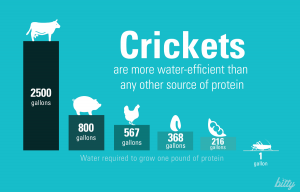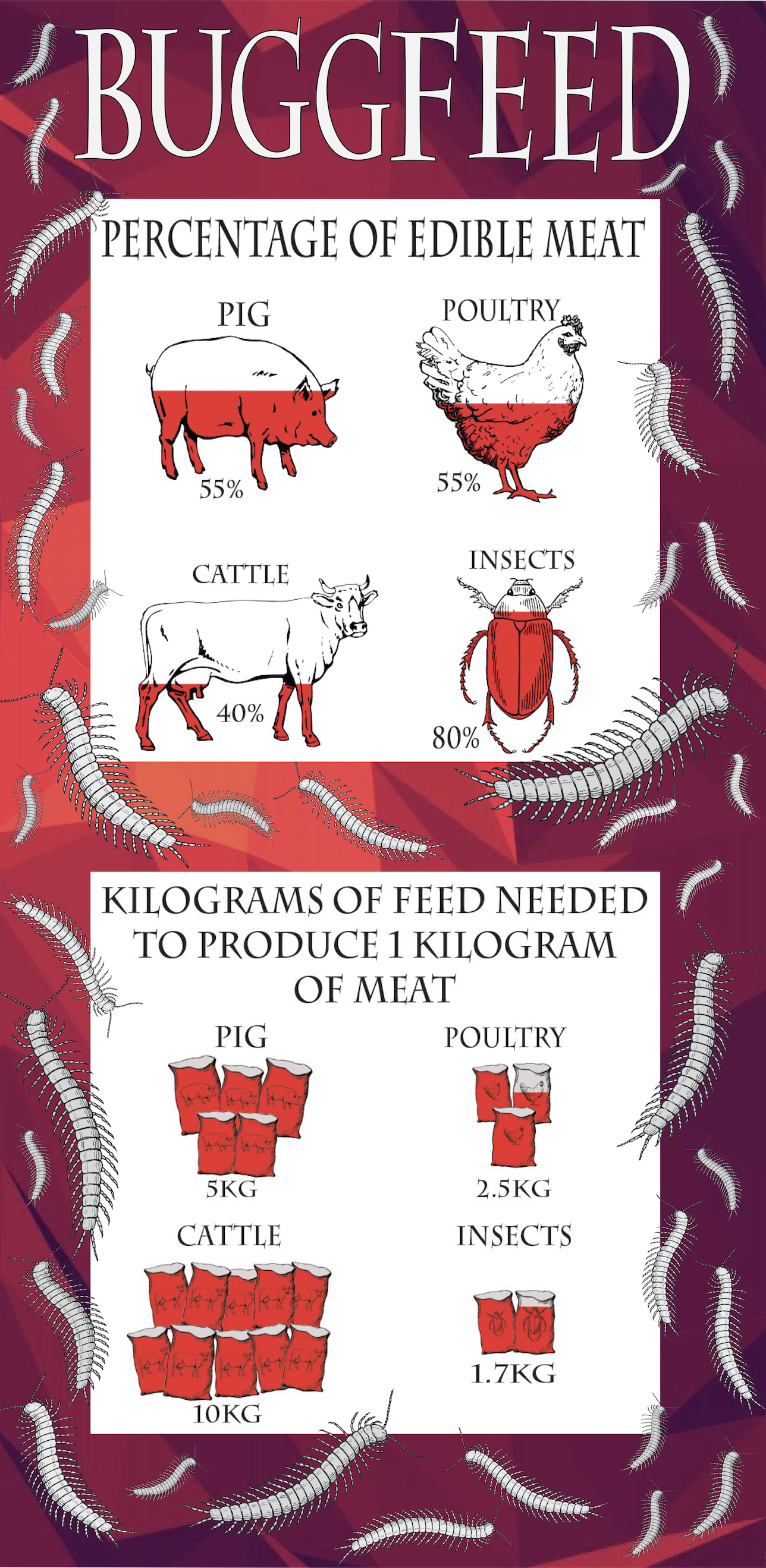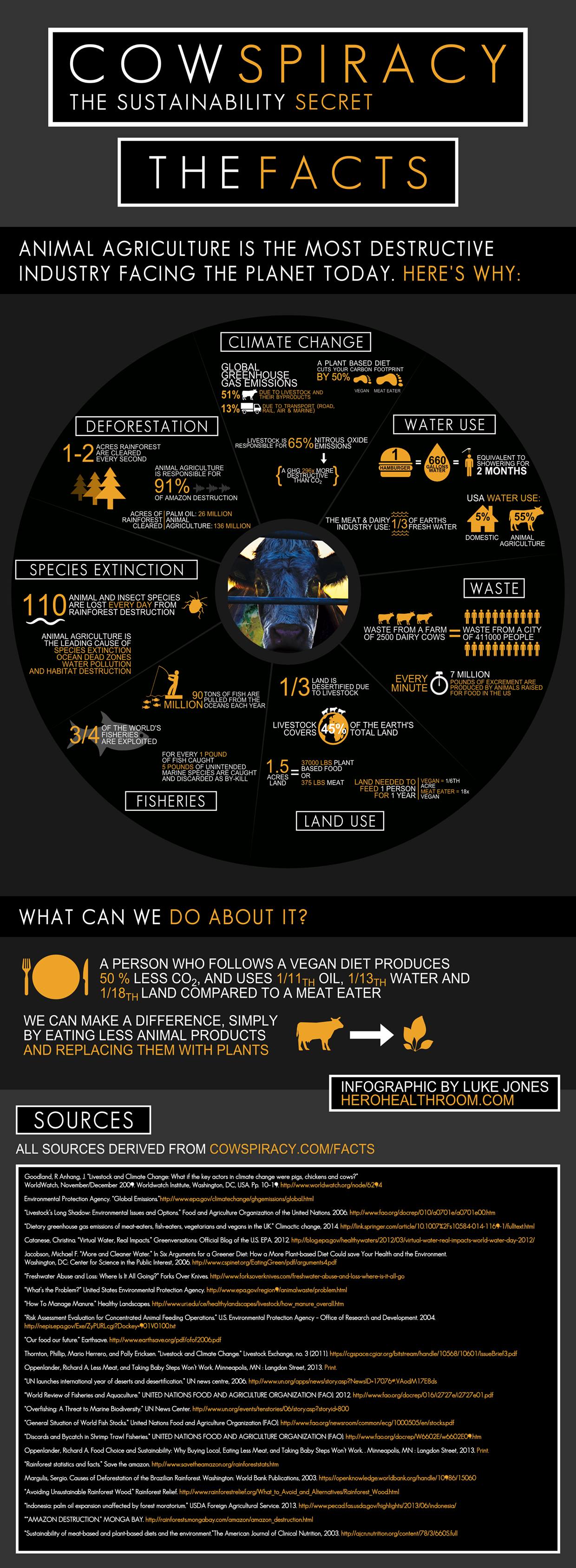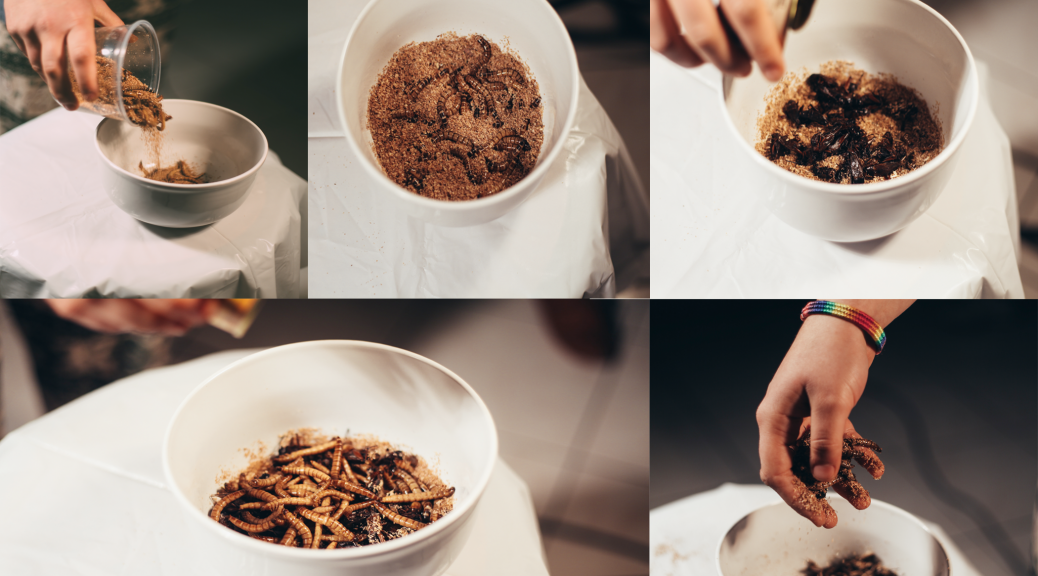Weekday Snack
A quick and easy way to get protein to get you through your busy day!
Come to Dawson’s “Fear The Bite” event to find this and other recipes that incorporate these and other yummy bugs!
Event details can be found on the “Event” page of this website.
Watering Down Our Burgers
By Kristen Payne

Source: Gracelinks.org
According to the “Water Footprint of Food” published in GraceLinks.org, the food we eat is responsible for more than 2/3 of our total water footprint.
A lot of this water consumption goes into raising the animals that we ultimately kill in order to produce meat for the population. In an article for the L.A. Times written by Betty Hallock, she says, “1 pound of beef requires 1,799 gallons of water, which includes irrigation of the grains and grasses in feed, plus water for drinking and processing.”
Cattle, and all other animals in general, are not born ready to eat. Once they are no longer reliant on their mothers to provide their nutrition, calves live on a diet of mainly grass for around 4 months. After that time, they then live off a grain-based diet for another 4 months. Being able to provide this quantity of food requires exorbitant amounts of water in order for it to grow. Not to mention that the animals themselves need drinking water as well. Also, it is important to take in account the size of cattle compared to other livestock animals; because of their size they simply need more food to live off of.
Gracelinks.org explains that “the average American eats about 167 pounds of meat a year.” The math is simple. Say all of this meat is consumed in beef, at 1,799 gallons of water for every pound of beef, to feed the average American, it will mean using 300,433 gallons of water per person per year.
Outsourcing our meat is also not a logical solution to the problem. Transporting resources over long distance ads to pollution and, according to Gracelinks, “takes about 3/4 gallon of water to produce the gasoline needed to drive 1 mile.”
So what happens next? If we continue on this path of using gallon after gallon of water to raise cattle and different animals that give us meat, we will evidently run out of this already scarce resource. As water sources deplete we are going to have to focus on using the water we have in more efficient ways, prioritizing where it will have to go first. Hopefully, producing meat will not be too far up on the list.
As many people rely on meat products for their daily protein intake, finding high-protein alternatives to meat is integral. “The average insect is around half protein by dry weight, with some insects (such as locusts) up to about 75% protein” writes Krista Scott-Dixon, a writer of precisenutrition.com. Many think eating bugs will soon become a commonplace practice if we continue at this rate of enormous consumption of water, and it may not be a bad thing. Once we can overlook that idea that we are eating insects we can weigh the benefits. Not only are bugs high in protein, but they consume much less water thus ensuring sustainability. Not to mention the fact that they are not filled with hormones and anti-biotics like our meat.
It is important to mention that meat is not only the sole contributor to water consumption. Almost everything that we eat requires water to be made, but since meat is such a large cause of our water problem, it is much easier to eliminate.
In the end, is it really that bad? Grab your salt, pepper, and crickets, for this will soon be our reality.
Did you know?
When we eat bugs, we can consume more of if than any other meat product.![]()



